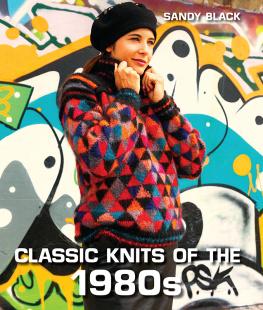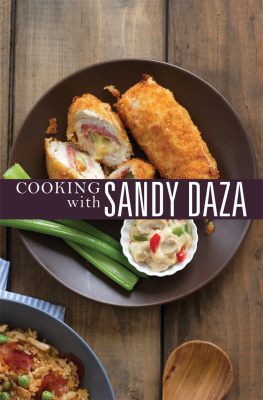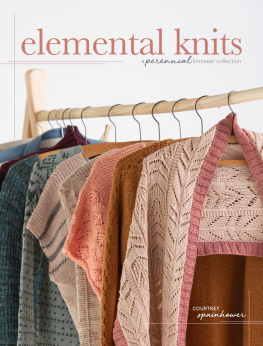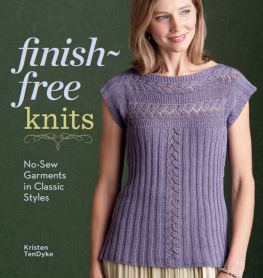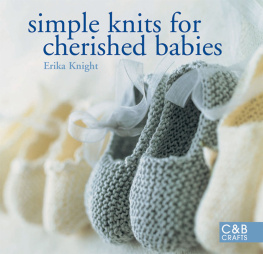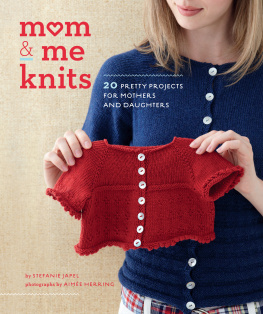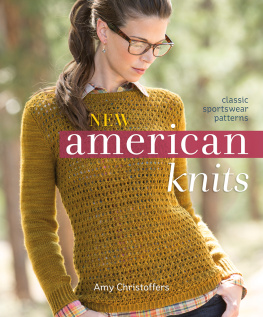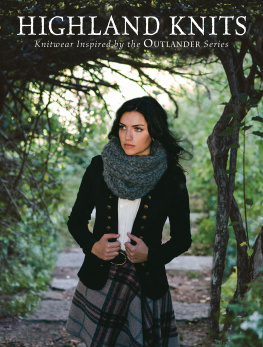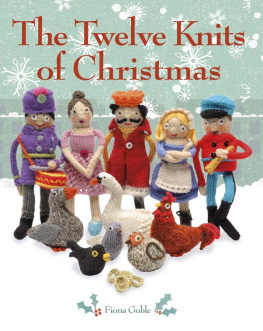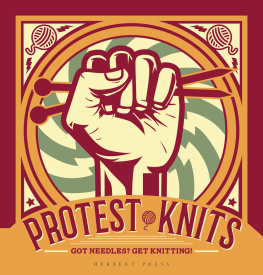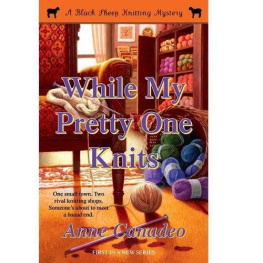SANDY BLACK - CLASSIC KNITS OF THE 1980S.
Here you can read online SANDY BLACK - CLASSIC KNITS OF THE 1980S. full text of the book (entire story) in english for free. Download pdf and epub, get meaning, cover and reviews about this ebook. City: S.l., year: 2021, publisher: THE CROWOOD PRESS LTD, genre: Home and family. Description of the work, (preface) as well as reviews are available. Best literature library LitArk.com created for fans of good reading and offers a wide selection of genres:
Romance novel
Science fiction
Adventure
Detective
Science
History
Home and family
Prose
Art
Politics
Computer
Non-fiction
Religion
Business
Children
Humor
Choose a favorite category and find really read worthwhile books. Enjoy immersion in the world of imagination, feel the emotions of the characters or learn something new for yourself, make an fascinating discovery.
- Book:CLASSIC KNITS OF THE 1980S.
- Author:
- Publisher:THE CROWOOD PRESS LTD
- Genre:
- Year:2021
- City:S.l.
- Rating:5 / 5
- Favourites:Add to favourites
- Your mark:
- 100
- 1
- 2
- 3
- 4
- 5
CLASSIC KNITS OF THE 1980S.: summary, description and annotation
We offer to read an annotation, description, summary or preface (depends on what the author of the book "CLASSIC KNITS OF THE 1980S." wrote himself). If you haven't found the necessary information about the book — write in the comments, we will try to find it.
CLASSIC KNITS OF THE 1980S. — read online for free the complete book (whole text) full work
Below is the text of the book, divided by pages. System saving the place of the last page read, allows you to conveniently read the book "CLASSIC KNITS OF THE 1980S." online for free, without having to search again every time where you left off. Put a bookmark, and you can go to the page where you finished reading at any time.
Font size:
Interval:
Bookmark:

CLASSIC KNITS OF THE
1980s
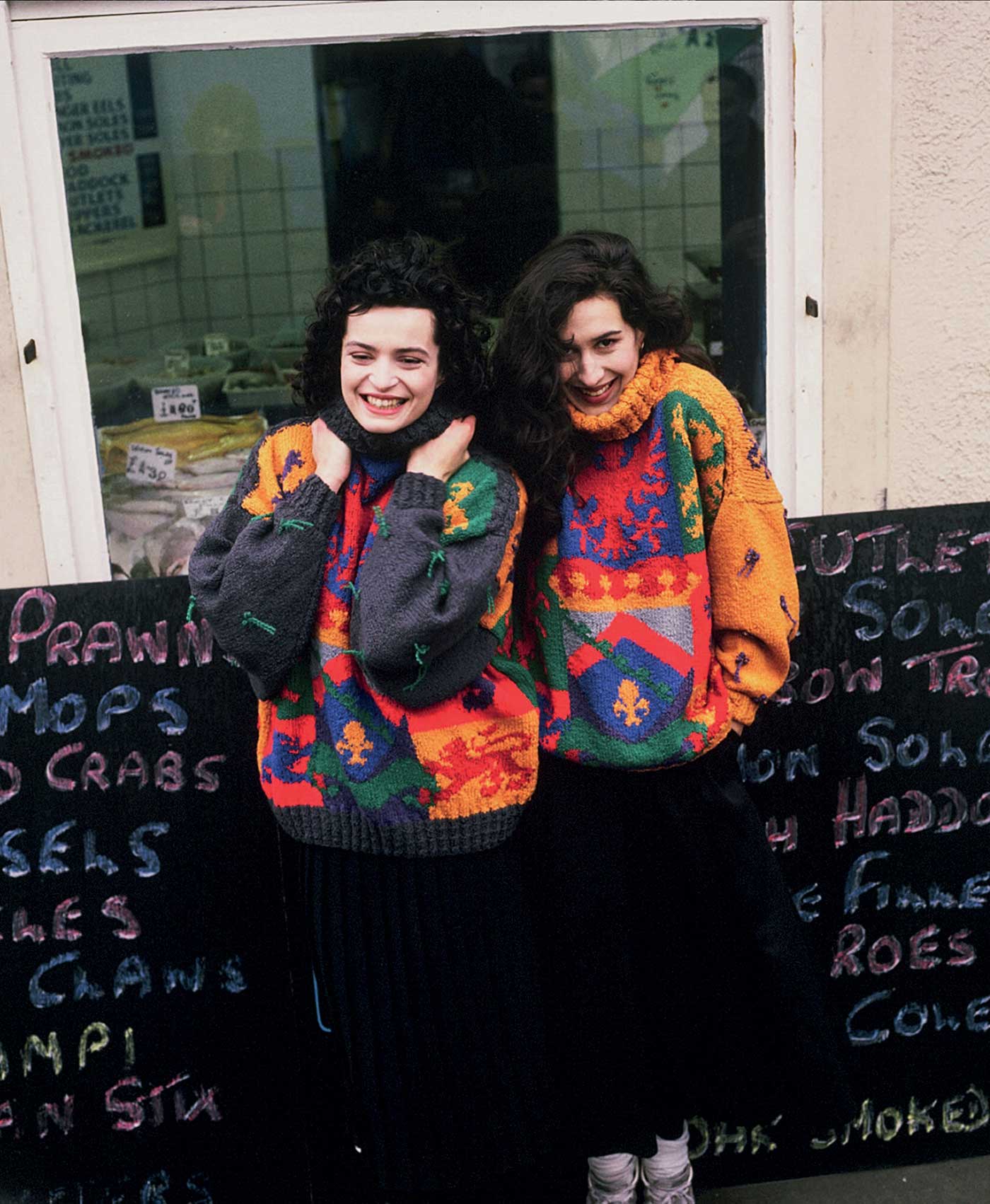
Original 1985 image of the Lion and Unicorn sweater part of the Sandy Black Original Knits Heraldic collection. (Photo: David McIntyre)
CLASSIC KNITS OF THE
1980s
SANDY BLACK

First published in 2021 by
The Crowood Press Ltd
Ramsbury, Marlborough
Wiltshire SN8 2HR
www.crowood.com
This e-book first published in 2021
Sandy Black 2021
All rights reserved. This e-book is copyright material and must not be copied, reproduced, transferred, distributed, leased, licensed or publicly performed or used in any way except as specifically permitted in writing by the publishers, as allowed under the terms and conditions under which it was purchased or as strictly permitted by applicable copyright law. Any unauthorised distribution or use of this text may be a direct infringement of the authors and publishers rights, and those responsible may be liable in law accordingly.
British Library Cataloguing-in-Publication Data
A catalogue record for this book is available from the British Library.
ISBN 978 1 78500 803 0
Dedication
This book is for Kevin, who shared all the twists and turns of the fantastic knitwear journey.
Photo credits
The modelled Sandy Black knitwear images have been taken by different photographers over time; see the individual captions. Jo Teasdale created the brand new photographs; original 1980s photographs were taken by David McIntyre, Barbara Bellingham, and Paul Dennison. Barbara Bellingham and Paul Dennison also provided a few of the close-up photographs as indicated. All other knitting close-up and documentary images are by Morris Baker; early knitwear and inspiration photographs are my own. I am grateful to Rowan Yarns for permission to reproduce their 1980s images of Sandy Black designs plus designs by Artwork, Susan Duckworth and Martin Kidman. Thanks also to designers Kaffe Fassett, Sasha Kagan and Patricia Roberts for providing images. Historical knitting images were supplied by V&A Images, and Visionary Knitwear exhibition images by the Fashion and Textile Museum London. Thanks go to Nolan Simon and 47 Canal for permission to reproduce his Sweater painting of my landscape design.
Disclaimer
Every effort has been made to trace the original copyright holders of the images in this book. Please contact the publisher in case of queries.
PREFACE
Long before beginning my own knitwear business, I would regularly collect haberdashery- and knitting-related items that interested me old knitting patterns from the 1930s to the 1960s; large quantities of buttons, in all shapes and sizes that were like sweets in their varied colours, purchased from wholesalers; patterns and materials (with no clear purpose for them at the time); wonderful beehive-shaped yarn holders, produced by Patons Yarns to promote their Beehive brand of yarns and now collectors pieces, made of colourful Bakelite; and knitting needles and accessories made of Bakelite, metal, wood, plastic and bone.
From the late 1970s, through the 1980s and into the 1990s, I ran my Sandy Black Original Knits designer-knitwear label as one of a distinctive and influential group of British knitwear designers producing one-off pieces and fashion collections that were sold internationally in prestigious fashion stores worldwide. This style of handmade, colourful and fun fashion knitwear became highly popular, and designs and patterns were featured regularly in the fashion and craft press. Having regularly designed knitting patterns for magazines and books, I took the bold step of producing some of my ready-to-wear designs as colourful knitting kits and published patterns for home knitters. In 1982, my partner and I developed Sandy Black: our own brand of knitting yarns and colours in wool, mohair, cotton and luxurious 100-per-cent angora, for home knitting.
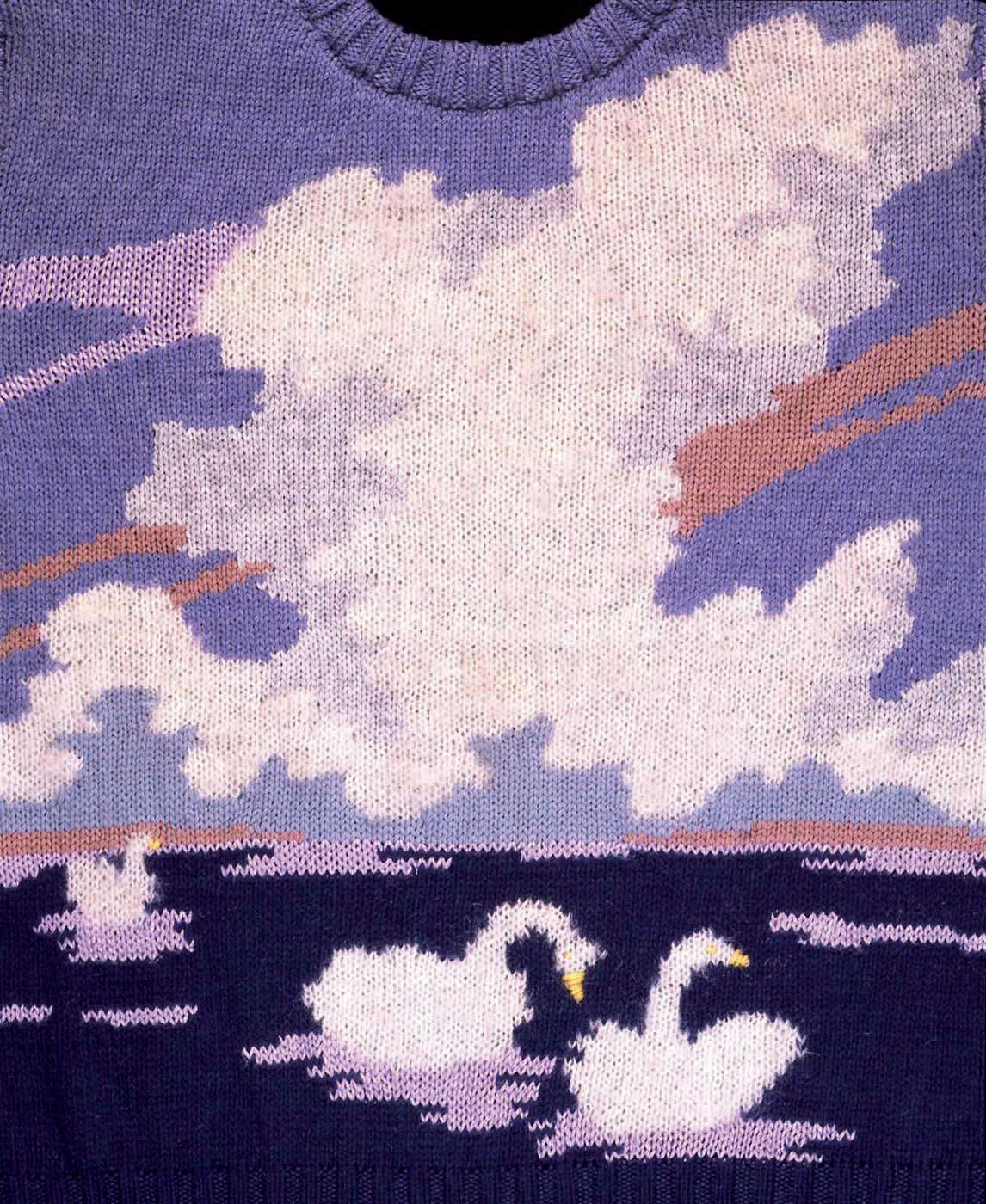
The Swanscape sweater, one of my signature range of landscape and skyscape sweaters, here in a dramatic colour palette. Worked in machine-knitted intarsia with wool, angora and rayon yarns. The range included a statement dress with a similar design over the entire front. (Photo: Barbara Bellingham)

Early examples of knitwear that I made by machine and by hand, including a Fair Isle-patterned mans sweater and a lacy womans sweater, inspired by knitting traditions from the 1930s and 1940s. Note the green sweater with childrens characters Noddy and Big Ears (f rom Enid Blyton books). This was my first foray into hand-worked intarsia knitting and design.
My career has followed an unconventional path in both the fashion industry and academia. With a great love of knitting and its potential, but without any formal training, I became a knitwear designer and created an international fashion-knitwear business. At school, I was equally interested in both the sciences and the arts and decided to specialize in mathematics in an attempt to bridge the two fields. Having learnt to knit and crochet as a child, taught by my mother and grandmother, I loved making things for myself. My interest in hand knitting was revived whilst studying mathematics at university, as a practical way to make interesting and unusual clothes, and I was regularly to be seen knitting in public and around the campus much to the amusement of everyone. My gran knits! was a regular comment, as knitting was thought to be so old-fashioned then.
Knitting was for me a perfect combination of mathematics and creative arts. I was inspired by the infinite potential of yarns and the knitted stitch as a unit of pattern design and began to draw all kinds of images on my graph paper, from stylized characters to landscapes, for translation to hand knitting. A breakthrough came when I was still at university, when I bought a simple knitting machine. Using this machine, I could more rapidly explore the visual and textural possibilities of knitting as a medium for design. I was able to manipulate and interfere with the basic knitting by using manual techniques, such as making bobbles, to create textural patterns, and to incorporate textured yarns into the surface of the fabric. But, my favourite technique became intarsia, which is a specialized manual process historically made on the simplest types of machine. The intarsia technique is similar to tapestry weaving on a loom, where it is possible to introduce an endless array of colours in each row. With this technique, I could create knitted imagery and pictures inspired by the paint-by-numbers kits that I had as a child and the concept of the landscape sweater was born! I knew immediately that these endless possibilities were to become my full-time occupation, and I decided to be a knitwear designer, even though I wasnt sure how! I had hoped to go on to more formal study of knitted textiles; however, funding was difficult, and the link between mathematics and knitting was little understood at the time, so I forged my own independent career path, becoming a self-taught designer and entrepreneur running my own business.
Font size:
Interval:
Bookmark:
Similar books «CLASSIC KNITS OF THE 1980S.»
Look at similar books to CLASSIC KNITS OF THE 1980S.. We have selected literature similar in name and meaning in the hope of providing readers with more options to find new, interesting, not yet read works.
Discussion, reviews of the book CLASSIC KNITS OF THE 1980S. and just readers' own opinions. Leave your comments, write what you think about the work, its meaning or the main characters. Specify what exactly you liked and what you didn't like, and why you think so.

